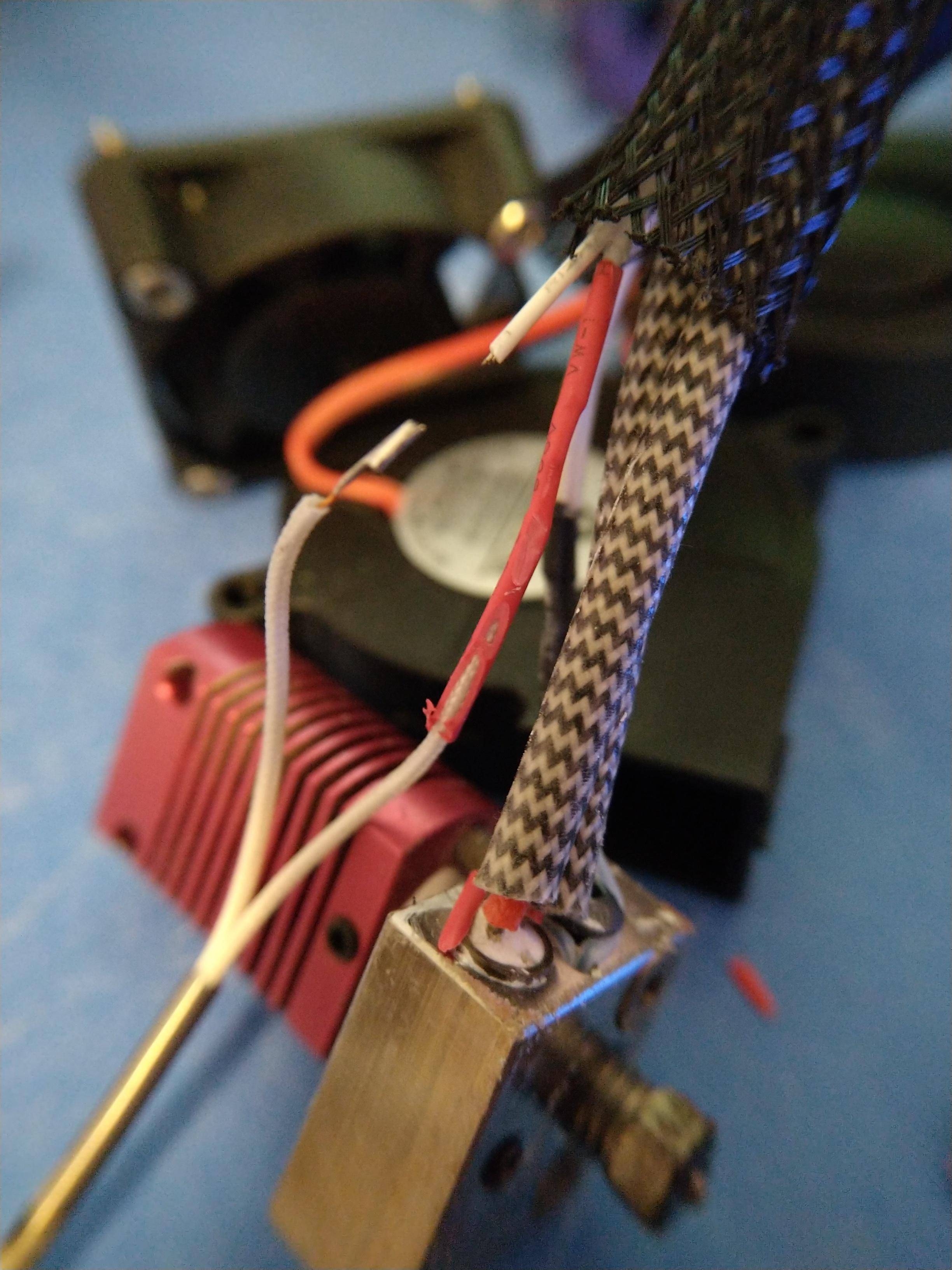This isn't a complete diagnostic procedure, but what worked for me.
After asking around and thinking about the magnitude of the fluctuations, a bad heater cartridge or bad connection to the heater cartridge didn't make a lot of sense, even at 25 mm³/s flow and over 300 °C where I was experiencing the problems. To try to confirm this, I went back and tried a print at 250 °C. I also measured the cartridge resistance and found it about 1 ohm high (underperforming) but this was nowhere near enough to explain any problems.
Since the thermistor seemed the most likely culprit, I then disassembled the toolhead to check its mounting and possibly replace it. It was still firmly mounted, and had no visible damage to the wiring, which is protected by a spring coil. Since my block has an attachment point for the glass bead style thermistor too, I found my original Creality-issue one of those and attached it too. After putting things back together and switching configuration to accept the old thermistor, I was able to make test prints without the rapidly fluctuating temperature readings. Over 300, there's still some fluctuation, but that seems to be accounted for by the very low resistance (and thereby low measurement precision) the 100k has at these temperatures, where 1 ohm is more than a 5 °C difference and the ADC resolution is only something like 1/16 of an ohm.
So, it seems to be a bad thermistor.
Update: After limping along for a good while on the 100k NTC thermistor bead, I finally disassembled everything to replace the T-D500, and immediately found the culprit. The wires to thermistor are not a single piece, but were sloppily solder-joined and heat-shrink-wrapped by the vendor(/reseller?) a few centimeters from the thermistor. This exact point in my wire harness was somewhat strained at the point where it exited between the hotend enclosure and extruder body, and apparently suffered a hairline crack that fell apart completely during disassembly:

To make it easier to switch thermistors in the future if I need to, and since I was needing to learn crimping, I put JST-XH connectors on both sides where it was broken, and shifted the junction to sit inside the enclosure but away from the heater block. It's now fully operational again, and the replacement I purchased is still sitting in its bag as a spare.
